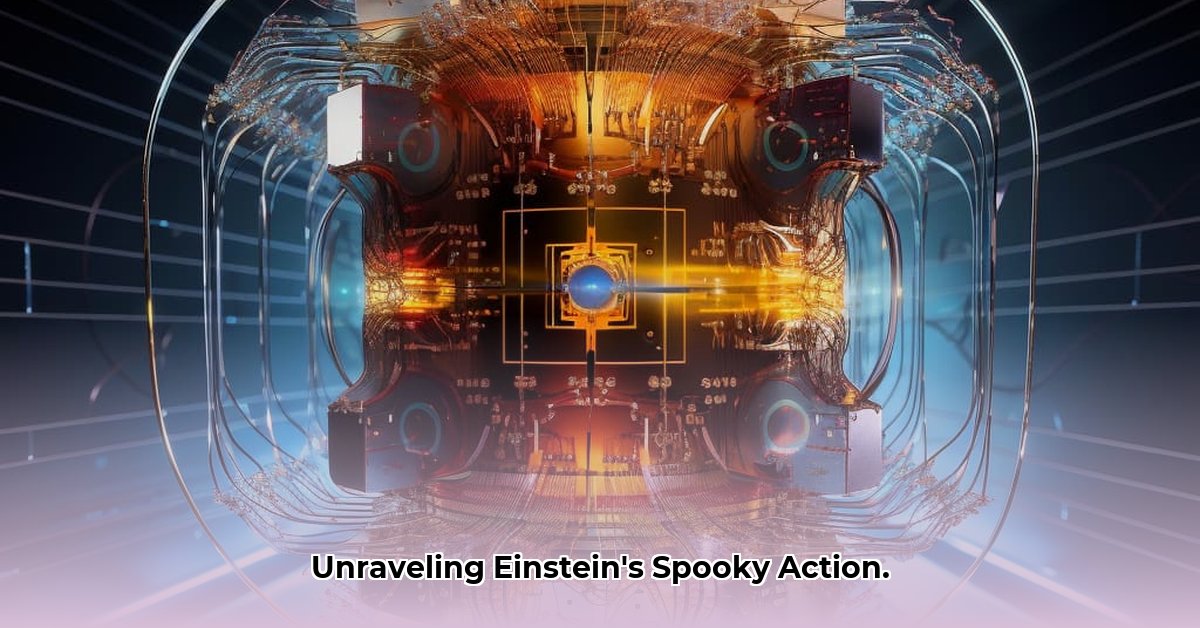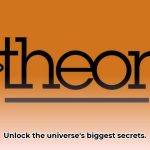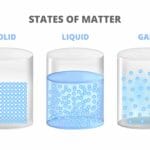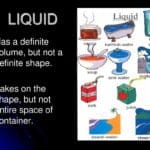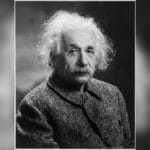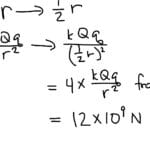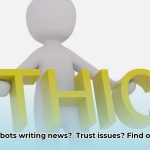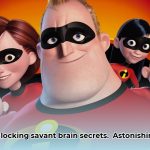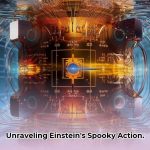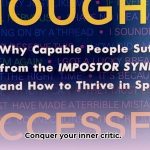Imagine two coins flipped at the same time, miles apart. No matter how far they are, if one lands heads, the other always lands tails. That’s kind of like quantum entanglement. It’s a deeply connected relationship between tiny particles, where knowing something about one instantly tells you something about the other, no matter the distance separating them. Albert Einstein famously called it “spooky action at a distance,” and it’s been baffling and intriguing scientists for decades. But it’s also unlocking incredible possibilities in technology. This article will explain the intricacies of quantum entanglement in accessible terms, explore its historical context, and illustrate how it could revolutionize various aspects of our future, from super-fast computers to unbreakable communication codes and more precise medical imaging. We’ll uncover both the mind-bending mysteries and the ongoing debates scientists still have about this foundational concept. Get ready for a fascinating journey into the heart of quantum physics! For another example of mind-bending science, learn about gene editing.
Quantum Entanglement: Einstein’s “Spooky Action at a Distance” Explained
A Journey into the Weird World of Quantum Interconnection
Imagine two coins flipped at the same time, always landing on opposite sides – one heads, the other tails, no matter how far apart they are. That’s a simplified yet illustrative picture of quantum entanglement, a mind-bending phenomenon that even Einstein found profoundly unsettling. He famously dubbed it “spooky action at a distance,” underscoring its counterintuitive nature. This wasn’t just a philosophical head-scratcher; it was a fundamental challenge to our understanding of how the universe operates at its most basic level, delving into the enigmatic realm of quantum states and their seemingly instantaneous correlations.
Early Days: The Dawn of Quantum Weirdness and Quantum Phenomena
The dawn of the 20th century witnessed a sweeping upheaval in physics. Classical physics, with its seemingly neat and predictable rules, struggled to adequately explain the increasingly bizarre behavior of tiny particles. Groundbreaking new discoveries, such as the wave-particle duality of light, strongly suggested that the realm of the very small operated under a completely different set of rules than those governing our everyday macroscopic world. It was within this context of scientific revolution that quantum entanglement emerged, a concept so strange and counterintuitive that it initially seemed almost like magic. It posited that tiny particles could become inextricably linked together in a way that fundamentally defied our everyday experiences and classical intuitions, setting the stage for a new era of scientific inquiry.
The Experiments: Putting Spooky Action to the Test & Bell’s Theorem
Fueled by Einstein’s initial skepticism and the inherent strangeness of the concept, scientists embarked on a quest to rigorously test this “spooky action.” Numerous experiments, most notably those conducted by Alain Aspect and his team in the 1980s, yielded results that strongly supported the reality of entanglement, solidifying its place in the quantum world. These experiments employed cleverly designed setups to test Bell’s inequalities – a set of mathematical constraints on correlations that would be violated if local hidden variables (pre-existing properties determining the outcome) were responsible for the observed correlations between entangled particles. The experimental results consistently demonstrated a violation of Bell’s inequalities, providing compelling evidence against the existence of local hidden variables and pointing towards something truly strange: particles linked across vast distances, instantaneously influencing each other and seemingly defying the principle of locality.
Unveiling the Mystery: Superposition and the “Collapse” & Quantum Measurement
The key to unlocking the mysteries of entanglement lies in understanding the concept of quantum superposition. Imagine a coin spinning in the air before it lands – it’s neither definitively heads nor definitively tails, but rather exists in a probabilistic combination of both states simultaneously. Similarly, before a measurement is made, an entangled particle exists in a superposition of states, meaning it is in a combination of all possible states (e.g., spin up and spin down) simultaneously. The very act of measuring a property of one particle forces it to “choose” or “collapse” into a definite state (either heads or tails, spin up or spin down), and this choice instantaneously determines the state of its entangled partner, regardless of the physical distance separating them. This sudden “collapse” of the wavefunction (the mathematical description of a quantum state) upon measurement is what makes entanglement so conceptually puzzling and fascinating, highlighting the central role of quantum measurement in shaping the behavior of quantum systems.
Different Perspectives: Interpreting the Enigma & Quantum Interpretations
The precise interpretation of quantum entanglement remains a vibrant and active area of debate among physicists and philosophers alike. One prominent viewpoint, known as the Copenhagen interpretation, suggests that the act of measurement itself is what fundamentally causes the superposition to collapse into a definite state. In contrast, the Many-Worlds interpretation proposes a far more radical and mind-bending idea: that the act of measurement causes the universe to split into multiple parallel universes, with each universe representing a distinct and possible outcome of the measurement. Still other interpretations, such as Bohmian mechanics (also known as pilot-wave theory), offer alternative explanatory frameworks. These diverse interpretations underscore the profound philosophical implications of entanglement, as it challenges our deepest-seated assumptions and ingrained intuitions about the nature of reality itself.
The Limits of “Spooky Action”: No Faster-Than-Light Communication & No-Communication Theorem
Despite the seemingly instantaneous nature of the correlations observed between entangled particles, there’s a crucial and fundamental caveat: you cannot use quantum entanglement to send information or transmit messages faster than the speed of light. Although measuring the state of one entangled particle instantaneously reveals the state of its partner, we lack the ability to actively control the outcome of that measurement in a way that would allow us to intentionally transmit information faster than light. This crucial limitation is formally captured in what’s known as the “no-communication theorem,” which rigorously demonstrates that entanglement cannot be exploited for superluminal communication. In essence, while the connection between entangled particles is undeniably real, it cannot be harnessed for sending signals or messages that violate the fundamental speed limit of the universe.
From Lab Curiosity to Technological Revolution & Quantum Technologies
Quantum entanglement is rapidly transitioning from a mind-bending and esoteric lab curiosity to a potentially transformative technology powerhouse with the potential to revolutionize various aspects of our lives. Its unique and counterintuitive properties are paving the way for groundbreaking advances in diverse fields, including computing, communications, and sensing — far beyond its historical status as simply a topic of philosophical discussion. Quantum computing, for instance, relies heavily on the principles of entanglement to perform certain types of calculations exponentially faster than even the most powerful classical computers, promising to unlock solutions to currently intractable problems in areas such as drug discovery, materials science, and financial modeling. Quantum cryptography, which leverages the fundamental laws of quantum mechanics for secure communication, utilizes entanglement to create encryption keys that are theoretically unbreakable, fundamentally changing the way we protect sensitive information in an increasingly interconnected world. Although these technologies are still in relatively early stages of development, the potential applications are vast, transformative, and continue to drive intense research and development efforts worldwide.
Future Frontiers: Unexplored Territory & Quantum Future
While we’ve made substantial strides in understanding the intricacies of quantum entanglement, countless mysteries and open questions remain, beckoning scientists to delve deeper into the quantum realm. How exactly does this instantaneous correlation truly work over seemingly vast distances? What are the full extent of potential applications for this unique phenomenon, beyond the technologies we’ve already conceived? What does entanglement ultimately tell us about the fundamental nature of space and time themselves? Scientists and researchers around the globe are working tirelessly to uncover these answers, pushing the boundaries of our knowledge and challenging our preconceived notions about the universe. The journey to fully grasp the enigmatic world of entanglement promises to be one filled with astonishing discoveries and a profound shift in how we view our place in the cosmos.
Summary of Key Points: A Quick Recap
| Feature | Description |
|---|---|
| Quantum Entanglement | Two or more particles linked in a way that their quantum states are intertwined, regardless of the distance separating them. |
| Superposition | A fundamental principle where a particle exists in a combination of multiple states simultaneously until a measurement is performed. |
| Wavefunction Collapse | The process by which measurement forces a particle to “choose” a single, definite state, instantaneously affecting its entangled partner(s). |
| Bell’s Inequalities | A set of mathematical constraints that are violated by entanglement, providing strong experimental support for its existence. |
| No-Communication Theorem | A crucial theorem stating that entanglement cannot be exploited for sending information or signals faster than the speed of light. |
| Applications | A wide range of potential applications, including quantum computing, quantum cryptography, enhanced medical imaging, and more. |
| Ongoing Research | Active research continues to probe the fundamental nature of entanglement, explore its practical applications, and address remaining open questions. |
The exploration of quantum entanglement is an ongoing and dynamic endeavor, with new insights and challenges constantly emerging at the forefront of scientific inquiry. Although the “spooky action” of entanglement may seem counterintuitive and defy our classical notions of reality, it is now recognized as a fundamental and integral aspect of our universe, holding potentially revolutionary implications for technology, our understanding of the cosmos, and our place within it.
How to mitigate decoherence challenges in maintaining quantum entanglement for long-distance applications
Albert Einstein famously termed it “spooky action at a distance,” and he wasn’t wrong – quantum entanglement, where two or more particles become inextricably linked regardless of the physical distance separating them, is both mind-bending in its conceptual implications and incredibly promising for a vast range of future technologies, most notably including quantum networks capable of secure communication and distributed quantum computing. However, there’s a significant catch that needs to be addressed before these technologies can become a reality: entanglement is an incredibly fragile phenomenon. Environmental noise from numerous sources, collectively known as decoherence (the loss of quantum coherence), can rapidly disrupt this delicate quantum connection, causing the entangled particles to lose their unique linked properties. Therefore, the question of how to mitigate decoherence challenges in maintaining quantum entanglement for long-distance applications stands as a critical hurdle that must be overcome to fully realize the potential of this fascinating quantum phenomenon.
Understanding the Enemy: Decoherence & Environmental Noise
To effectively combat decoherence, it’s crucial to first understand its origins and how it impacts entangled systems. Analogously, imagine two perfectly synchronized dancers performing a complex routine. Entanglement is akin to their flawless coordination and perfect synchronization. Now, imagine that a clumsy stagehand keeps bumping into them, disrupting their movements and throwing off their timing. This “bumping” is an apt analogy for the interaction of entangled particles with their surrounding environment – stray photons colliding with the particles, ambient vibrations shaking the apparatus, even slight temperature changes within the lab. Such interactions effectively scramble the delicate quantum state of the entangled particles, causing them to lose their entanglement over time. The further apart the particles are physically located, the more opportunities there are for such disruptive interactions to occur, making the challenge of maintaining long-distance entanglement even more daunting.
Strategies for Protecting Entanglement & Quantum Error Correction
Fortunately, researchers have developed several ingenious strategies designed to shield entangled particles from the potentially disruptive effects of decoherence, allowing us to maintain entanglement over longer distances and for extended periods. These methods essentially strive to isolate the quantum system as much as possible, minimizing its interactions with the surrounding noisy environment.
1. Quantum Error Correction (QEC) Codes:
QEC codes are sophisticated and powerful techniques that actively detect and correct errors caused by decoherence as they occur. Imagine having a backup dancer who is perfectly trained to step in and seamlessly take over if the main dancer makes even a slight mistake. QEC codes work in a conceptually similar way, using redundant information encoded within the entangled particles’ state to identify and correct disturbances that are caused by environmental noise. There are a variety of different QEC codes available, each with its own specific strengths and weaknesses, and the optimal choice of code depends on the specific application at hand and the particular characteristics of the decoherence that is being combated.
2. Entanglement Distillation:
Entanglement distillation is a powerful technique that involves starting with a large number of weakly entangled pairs and then processing these pairs in a clever way in order to create a smaller number of highly entangled pairs. Think of it like refining impure gold ore to isolate a purer, more valuable substance. The process of entanglement distillation effectively filters out the noisy and less entangled components of entangled pairs, thereby helping to increase the overall fidelity of the resulting entangled states, making them more robust and resilient to the effects of decoherence.
3. Dynamical Decoupling:
Dynamical decoupling is a technique that involves applying a series of precisely timed pulses to the entangled particles in order to counteract the effects of decoherence. Think of the pulses as carefully choreographing the dancers’ movements to minimize any possible impact from the clumsy stagehand. By applying a sequence of carefully designed and controlled manipulations, dynamical decoupling can effectively reduce the influence of environmental noise on the entangled particles, extending the lifetime of the entanglement.
Advanced Techniques and Future Directions & Quantum Advancements
The ongoing quest to maintain and extend long-distance entanglement is pushing the boundaries of several fields of science and engineering, including materials science, nanotechnology, and quantum control. Researchers are actively exploring and developing new materials with longer coherence times, meaning that their quantum states remain stable and less susceptible to decoherence for significantly longer periods of time. This is analogous to finding a more stable and robust stage for our dancers to perform on, thereby minimizing the chances of disruptions occurring. Furthermore, continuous improvements in quantum control techniques are enabling more precise and sophisticated manipulation of entangled particles, reducing the negative impact of decoherence and paving the way for more robust quantum systems.
One particularly fascinating area of active research is topological quantum computing. Topological quantum computers utilize exotic states of matter that are theoretically inherently protected against decoherence, analogous to having our dancers perform their routine within a protective bubble that shields them from external disturbances.
Key Takeaways:
- Decoherence: Environmental interactions disrupt the fragile quantum entanglement.
- QEC Codes: Sophisticated codes that detect and actively correct errors caused by decoherence.
- Entanglement Distillation: A process that refines weakly entangled pairs into high-fidelity pairs.
- Dynamical Decoupling: A technique that uses control pulses to counteract decoherence effects.
- Future Directions: New materials, improved quantum control, and topological quantum computing offer promising avenues for further extending entanglement.
- The challenge of scaling up: Maintaining entanglement efficiently over long distances as the number of entangled particles increases remains a major hurdle.
Quantum Entanglement in Secure Communication Networks: Applications and Challenges
Key Takeaways:
- Quantum entanglement offers the potential for unprecedented levels of security in communication networks, promising a new era of secure data transmission.
- Quantum Key Distribution (QKD) stands out as the most mature and advanced application of entanglement in secure communication, leveraging the fundamental properties of entanglement to create encryption keys that are, in principle, unbreakable.
- Despite its promise, the practical implementation of entanglement-based technologies faces significant technological hurdles, with maintaining the integrity of entangled states over long distances being a primary challenge.
- The practical deployment of QKD and related technologies is also hindered by challenges in scalability and cost-effectiveness, necessitating the development of more efficient and affordable quantum devices.
- Ongoing research efforts are heavily focused on improving quantum error correction techniques and developing quantum repeaters, which would extend the reach and resilience of quantum communication networks.
- Looking ahead, the future of secure communication may well rely on harnessing the unique power of Quantum Entanglement in Secure Communication Networks: Applications and Challenges.
Einstein’s Spooky Action: A Quantum Enigma & Quantum Origin
Imagine flipping two coins simultaneously, with the coins landing miles apart from one another. If one coin lands heads, you instantly know that the other coin must have landed tails – this is an example of classical correlation, where the outcomes of two events are linked in a predictable way. Quantum entanglement, however, is a far more bizarre and counterintuitive phenomenon that transcends the realm of classical physics. Entangled particles are linked in a deeply interconnected way, such that measuring the properties of one particle instantaneously reveals the properties of its distant partner, regardless of the spatial separation between them. As mentioned previously, Albert Einstein famously referred to this phenomenon as “spooky action at a distance,” highlighting its departure from classical intuition. But this “spooky action” is precisely what forms the basis of a revolutionary new approach to secure communication, promising unprecedented levels of data protection.
Quantum Entanglement and Secure Communication & QKD Protocols
The core principle behind Quantum Entanglement in Secure Communication Networks: Applications and Challenges lies in Quantum Key Distribution (QKD). QKD protocols exploit the unique properties of entangled photons to generate cryptographic encryption keys in a way that is fundamentally more secure than traditional methods. In a typical QKD scenario, two parties (often referred to as Alice and Bob) share pairs of entangled photons. Alice measures her photon and Bob measures his photon and they perform the same measurements at the same time. Any attempt to eavesdrop or intercept the entangled photons during transmission inevitably disrupts their quantum state, leaving a detectable trace of the intrusion. This means that Alice and Bob can be absolutely certain whether or not an eavesdropper (Eve) has attempted to gain access to their communication channel. If eavesdropping is detected, Alice and Bob discard the compromised key and generate a new one. This makes QKD systems virtually unhackable, offering a level of data security that far surpasses that of current classical encryption methods.
The Challenges: Decoherence and Distance & Quantum Limitations
Despite the theoretical promise of QKD, maintaining the delicate entanglement of photons across long distances in real-world communication channels presents a major technical hurdle. Entangled particles are inherently fragile and prone to “decoherence” – a process whereby they lose their quantum properties due to interaction with their surrounding environment. This decoherence effect limits the practical range of current QKD networks, as the entanglement degrades as the distance between the sender and receiver increases. To overcome this limitation, scientists are currently working on developing “quantum repeaters” – sophisticated intermediary stations that can revitalize the entangled states of photons, effectively extending the distance over which secure quantum communication can be achieved. Furthermore, advanced quantum error correction codes play a critical role in mitigating the inevitable noise and errors that occur during the transmission of quantum information, ensuring the integrity of the encryption keys.
Quantum Entanglement: Beyond Secure Communication & Quantum Applications
While secure communication is perhaps the most well-known application of quantum entanglement, the implications of this fundamental phenomenon extend far beyond this specific area. Quantum computers, for example, promise to deliver exponential speedups for certain types of calculations, leveraging the unique capabilities of entangled qubits (quantum bits) to perform computations that are intractable for even the most powerful classical supercomputers. However, building large-scale and stable quantum computers remains an incredibly complex engineering challenge. The key to unlocking the potential of quantum computing lies in mastering the control and maintenance of entanglement for a large number of qubits, which poses a significant barrier to progress. Furthermore, integrating quantum networks with existing classical communication networks to achieve a hybrid system presents unique challenges in terms of compatibility and security.
The Future Landscape of Entanglement Technology & Quantum Development
The development of Quantum Entanglement in Secure Communication Networks: Applications and Challenges is currently at a pivotal stage. While practical applications of entanglement-based technologies are still in the relatively early stages of emergence, the potential implications for the future of communication, computation, and sensing are enormous. The prospect of unbreakable encryption, vastly faster computers, and a fundamental shift in our understanding of information processing are driving intense research and development efforts around the world. While significant technical challenges remain to be addressed, ongoing research and development efforts promise to bring us closer to a future where the “spooky action” of quantum entanglement transforms the landscape of information technology and beyond. The race is on to overcome these technical hurdles and unlock the full transformative potential of quantum entanglement, ushering in a new era of quantum-enhanced technologies.
Quantum communication networks: Design, reliability, and security
Quantum Entanglement for Enhanced Medical Imaging: Technological Advancements and Limitations
Key Takeaways:
- Quantum entanglement offers the potential for significantly improved medical imaging techniques that surpass the capabilities of classical methods, allowing for earlier and more accurate diagnoses.
- Innovative techniques like Quantum Imaging with Undetected Photons (QIUP) and Imaging by Coincidence from Entanglement (ICE) demonstrate the potential for enhanced signal-to-noise ratios and improved resolution in medical images.
- Despite its promise, the practical application of entanglement-enhanced medical imaging faces several limitations, including slow acquisition times, high costs associated with specialized equipment, and the need for more efficient quantum light sources and improved detector technology.
- The development of more efficient and cost-effective quantum light sources, such as metalens arrays and gated quantum dots, is crucial for making entanglement-enhanced imaging more practical for widespread use.
- Balancing the competing demands of high resolution, high signal-to-noise ratio, and fast acquisition speed remains a significant challenge in the development of practical quantum medical imaging systems.
Einstein’s Spooky Action and its Medical Potential & Quantum Insight
As mentioned earlier, Albert Einstein famously referred to quantum entanglement as “spooky action at a distance,” a phrase that captures the counterintuitive nature of this phenomenon. So, what did he mean by “spooky action,” and how can this peculiar quantum effect potentially revolutionize the field of medicine? Imagine flipping two coins simultaneously, with the coins always landing on opposite sides – heads and tails. This is a simplistic analogy for how entangled particles behave – their fates are linked in a way that defies classical intuition, no matter how far apart they are. This bizarre and deeply connected relationship between entangled particles holds incredible promise for a wide range of medical applications, particularly in the realm of medical imaging, where it can potentially lead to earlier and more accurate diagnoses of diseases.
How Entanglement Improves Imaging & Quantum Applications
Quantum Entanglement for Enhanced Medical Imaging: Technological Advancements and Limitations is poised to revolutionize medical imaging by providing unprecedented levels of detail and sensitivity in detecting subtle anomalies within the human body. Standard medical imaging techniques rely on detecting individual photons of light or other forms of radiation that have interacted with the tissue being imaged. However, entangled photons, linked in their quantum states, provide significantly more information about the interaction process, allowing us to extract far more detailed information from the limited number of photons that are detected. Techniques like QIUP (Quantum Imaging with Undetected Photons) harness this enhanced information to detect even faint signals that would be undetectable using classical imaging techniques, potentially leading to earlier detection of cancerous tumors. ICE (Imaging by Coincidence from Entanglement), another game-changing approach to quantum imaging, allows us to see with unprecedented resolution, enabling the imaging of entire organisms, such as zebrafish, with stunning clarity and detail. All of these advances are revealing quantum advantages in medical imaging.
The Challenges of Quantum Entanglement in Medical Imaging & Quantum Hurdles
While the potential benefits of entanglement-enhanced medical imaging are enormous, there are significant hurdles that need to be overcome before these techniques can become widely adopted in clinical practice. One of the primary limitations of current methods is that they are relatively slow and expensive compared to conventional medical imaging techniques. For example, while ICE is capable of producing incredibly detailed images, obtaining high-quality results currently takes hours due to the relatively low efficiency of current entanglement sources and detector technology. The efficiency of the entire imaging process is fundamentally limited by the efficiency of how we create entangled photons, which is often accomplished using a process called spontaneous parametric down-conversion (SPDC). Improving the efficiency of the SPDC process is therefore a key area of focus for future research, as it would directly translate into faster imaging times. Furthermore, creating the specialized equipment needed for entanglement-enhanced imaging is currently quite costly, limiting its accessibility to research labs and specialized medical centers.
The Future of Entangled Imaging & Quantum Progress
The race is on to further develop and improve entanglement-enhanced medical imaging technology, pushing the boundaries of what’s possible in terms of resolution, sensitivity, and speed. Researchers are actively exploring better and more efficient light sources for generating entangled photons, such as metalens arrays (flat lenses made up of nanoscale structures) and gated quantum dots (semiconductor nanocrystals). These novel light sources could dramatically speed up imaging scans and reduce the overall cost of the equipment, making entanglement-enhanced imaging more practical for widespread use. This, in turn, would lead to quicker diagnoses, more effective treatment plans, and ultimately, improved patient outcomes. However, significant technological advancements are still needed to make Quantum Entanglement for Enhanced Medical Imaging: Technological Advancements and Limitations a readily available and affordable reality for patients worldwide.
A Balancing Act: Speed, Resolution, and Cost & Quantum Trade-offs
The ultimate goal in the development of entanglement-enhanced medical imaging is to achieve a delicate balance between speed, resolution, and cost, creating imaging systems that are fast, provide high-resolution images, and are affordable for widespread use. We need to develop faster imaging scans without sacrificing image quality or increasing the overall cost of the procedure. This is a complex optimization problem that requires innovation and ingenuity in both hardware and software design. However, the potential rewards – earlier diagnoses, more effective treatments, and a significant improvement in overall healthcare – make it a challenge worth pursuing, promising a revolution in how we diagnose and treat diseases.
- Robot Reporters: Ethics of AI in Journalism; A Guide to Trust - August 3, 2025
- Astonishing Savant Memories: Unlocking Brain Secrets Now - August 3, 2025
- Quantum Entanglement Explained: Einstein’s Spooky Action & Tech Revolution - August 3, 2025
